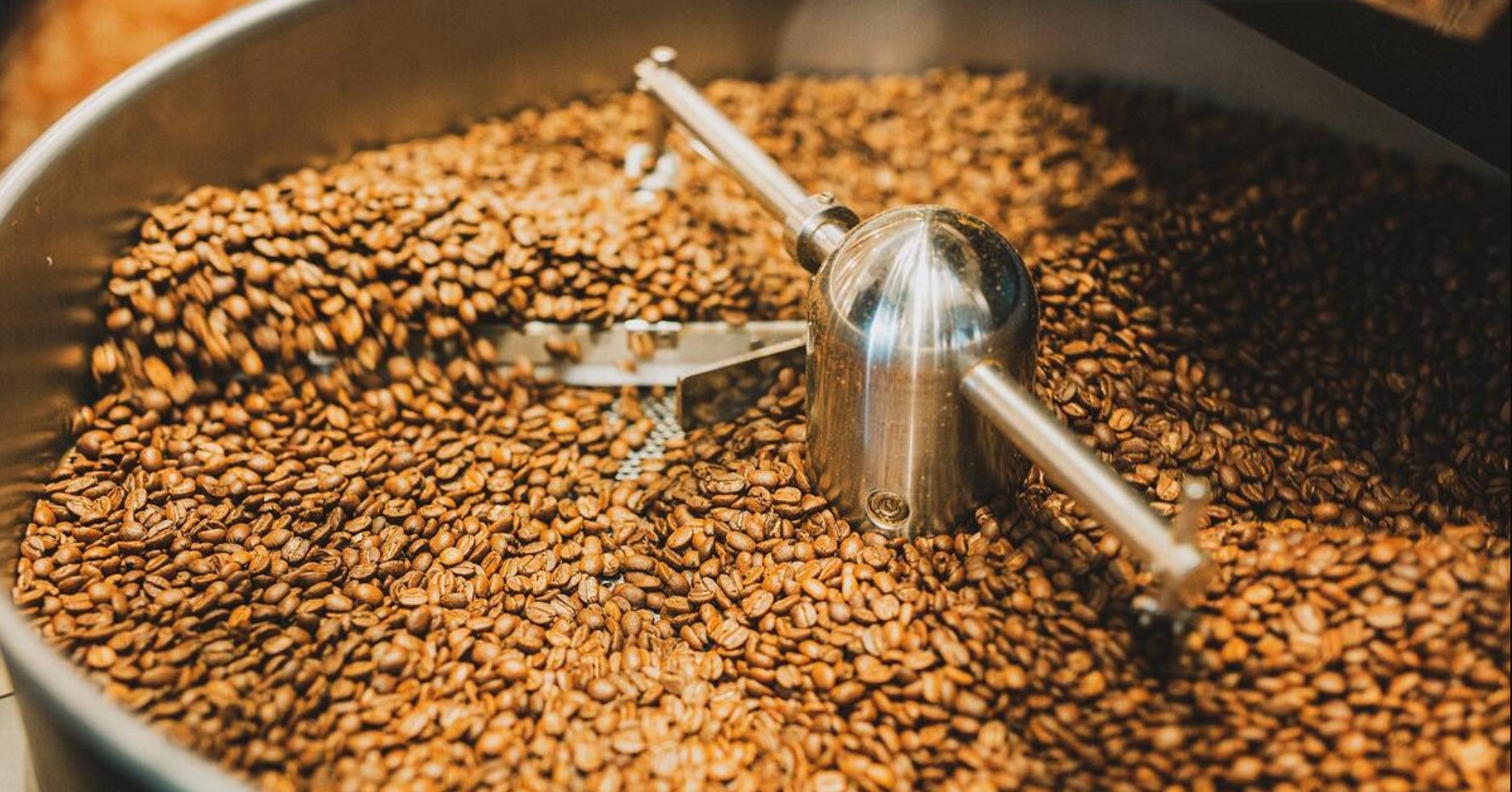
The Art and Science of Roasting: What Happens to Coffee Beans?
Coffee is more than just a beverage; it’s an integral part of daily life for millions of people worldwide. Whether it’s sipped in the quiet moments of the morning or shared during vibrant conversations with friends, coffee brings people together. Behind the rich flavors and enticing aromas of our beloved brew lies a fascinating process known as coffee roasting. In this article, we will delve into the art and science of coffee roasting, exploring what happens to coffee beans during this transformative journey.
What is Coffee Roasting?
At its core, coffee roasting is the process of transforming raw, green coffee beans into the aromatic, flavorful beans we recognize and love. This practice has a long history that can be traced back to ancient civilizations, where coffee beans were roasted over open fires. The process involves subjecting the beans to carefully controlled heat, causing chemical reactions that lead to the development of unique flavors and aromas.
The Art of Roasting
Coffee roasting is an art form that requires skill, precision, and a deep understanding of the coffee bean. Roasters, often considered artisans, play a crucial role in determining the final flavor profile of the coffee. They must consider various factors such as the origin of the beans, the altitude they were grown at, and the desired taste outcome. Each decision made by the roaster influences the overall taste, acidity, body, and aroma of the coffee.
The Science of Roasting
The science of roasting is a captivating exploration of the chemical transformations that occur within coffee beans during the roasting process. It goes beyond mere cooking; it is a precise blend of artistry and chemistry. As green coffee beans are subjected to carefully controlled heat, a symphony of chemical reactions takes place, giving rise to a myriad of flavors and aromas that define our favorite brews.
Central to this scientific process is the Maillard reaction, where amino acids and reducing sugars interact to create the rich, complex flavors we associate with roasted coffee. The delicate balance of time and temperature during roasting plays a crucial role in shaping the final taste profile. The roaster’s keen sense of observation and intuition guides them in knowing the precise moment to halt the roast to achieve the desired results.
The science of roasting extends to the development of different roast levels, from light to dark. Each level imparts distinct characteristics, allowing the roaster to cater to a wide range of preferences. From bright and acidic light roasts to bold and robust dark roasts, coffee enthusiasts can explore a diverse spectrum of flavors. Ultimately, the science of roasting brings out the best in coffee beans, unraveling a fascinating world of chemical complexities that delight our senses with each cup we savor.
Roasting Techniques
Over the years, coffee roasting techniques have evolved from traditional methods to advanced technologies. Traditional roasting involved manual labor and close attention to avoid uneven roasting. Today, various roasting machines, from drum roasters to hot air roasters, provide consistency and control. However, each technique has its advantages and disadvantages, impacting the nuances of the final cup.
Understanding Coffee Profiles
Coffee profiles refer to the distinctive characteristics of roasted coffee, which are influenced by the roast level and the origin of the beans. Each profile offers a unique sensory experience, allowing coffee enthusiasts to explore a diverse range of flavors, acidity, body, and aroma. Let’s delve into the different coffee profiles and what sets them apart.
| Profile | Roast Level | Flavor Characteristics |
| Light Roast | Light to Cinnamon | Bright acidity, floral and fruity notes, delicate body. Light roasts preserve the bean’s natural flavors and origin nuances. They exhibit a tangy and lively cup with pronounced acidity and a tea-like consistency. Ideal for those who prefer more delicate and nuanced coffee. |
| Medium Roast | City to Full City | A balance between acidity and body with caramel and chocolate notes. Medium roasts strike a harmony between the original bean characteristics and the development of rich flavors. The acidity is moderate, and the cup exhibits a pleasant balance of sweetness and body. A popular choice for everyday drinking. |
| Dark Roast | Vienna to French | Bold and robust flavors, often with smoky and toasty notes. Dark roasts showcase less of the bean’s origin and more of the roasting process. The body is full and syrupy, while the acidity is low. Dark roasts deliver a strong and intense cup with a bittersweet finish. Ideal for espresso-based beverages and those who enjoy a strong, bold flavor. |
| Specialty Roast | Varies | Unique flavor profiles highlighting specific bean characteristics. Specialty roasts defy traditional categorization, focusing on showcasing the distinct qualities of the beans. These profiles can vary widely, from wine-like acidity to tropical fruit notes, offering a captivating coffee experience for adventurous palates. |
Understanding coffee profiles empowers coffee enthusiasts to select beans that align with their taste preferences and brewing methods. Whether it’s the vibrant and acidic notes of a light roast or the bold intensity of a dark roast, each profile offers a delightful journey through the world of coffee flavors. The art of roasting lies in bringing out the best in each coffee bean, allowing its unique character to shine in the cup.
The Flavor Complexity
Coffee, in all its diverse forms, is a symphony of flavors that captivates our senses. The flavor complexity of coffee is a result of intricate chemical reactions that occur during the roasting process. Each step in the journey from green beans to the final cup contributes to the rich tapestry of tastes that coffee enthusiasts cherish. Let’s explore the elements that add depth and complexity to our favorite brew.
- The Maillard Reaction: At the heart of flavor complexity lies the Maillard reaction. This chemical dance between amino acids and sugars produces a wide array of flavors, ranging from caramel and toffee to nutty and chocolatey. It is the Maillard reaction that gives roasted coffee its delightful bittersweet notes, making each cup a unique sensory experience.
- Acidity and Brightness: Acidity is a crucial element in coffee flavor, adding brightness and liveliness to the cup. Different coffee profiles, from light to dark roasts, exhibit varying levels of acidity. Light roasts tend to have higher acidity, presenting vibrant and tangy flavors, while darker roasts offer a more mellow and subtle acidity.
- Body and Mouthfeel: The body of coffee refers to its weight and thickness on the palate. Lighter-bodied coffees feel delicate and tea-like, while full-bodied coffees have a syrupy, velvety texture. The mouthfeel enhances the overall coffee experience, allowing us to savor the richness and depth of the flavors.
- Origin and Terroir: The geographical origin of the coffee beans plays a significant role in flavor complexity. Beans grown in different regions exhibit unique characteristics influenced by the local climate, soil, and altitude. Coffees from Ethiopia may showcase floral and fruity notes, while those from Central America might have nutty and citrusy flavors.
- Roast Level: The degree of roasting directly impacts flavor complexity. Light roasts preserve much of the bean’s origin flavors, while darker roasts introduce smoky and toasty undertones. Medium roasts strike a balance, showcasing a harmony between the bean’s inherent qualities and the development of roasting flavors.
- Brewing Method: The method of brewing also affects flavor complexity. Espresso, with its intense extraction, delivers a concentrated and robust flavor profile. Pour-over methods offer a more delicate and nuanced experience, while French press brings out the coffee’s body and oils.
- Flavor Notes and Nuances: Coffee tasting notes provide insight into the specific flavors present in a particular brew. From berry-like acidity to floral aromas and hints of spices, these nuanced flavor profiles add depth and intrigue to our coffee journey.
Embracing the flavor complexity of coffee is an exploration of the vast and diverse world of tastes. Each cup unveils a unique combination of flavors, inviting us to embark on a sensory adventure. From the first sip to the last, coffee’s flavor complexity enchants our taste buds, leaving us eager to explore the next captivating brew.
Preserving Roasted Coffee
To preserve the flavors, aroma, and quality of roasted coffee, proper storage is vital. Exposure to air, light, and moisture can lead to flavor degradation and staleness. Roasted coffee should be stored in airtight containers, away from direct sunlight and excessive heat. Storing coffee in whole bean form and grinding it just before brewing enhances the freshness of the cup.
The Roasting Industry
Coffee roasting has become more than just a means to produce coffee; it’s an industry driven by passion and innovation. Roasters are continually experimenting with new approaches, roasting profiles, and blends to satisfy the evolving preferences of coffee enthusiasts. The artistry of roasting has given rise to numerous career opportunities for coffee enthusiasts, including professional roasters, cuppers, and green coffee buyers.
The art and science of coffee roasting represent a harmonious blend of creativity and chemistry. It’s a process that transforms humble green beans into a spectrum of flavors that delight the senses. Roasting is an ode to the richness of coffee, celebrated by skilled roasters and embraced by coffee lovers worldwide.
FAQs
- Is coffee roasting an ancient practice? Yes, coffee roasting dates back to ancient civilizations, where beans were roasted over open fires.
- How does roasting impact coffee flavor? Roasting produces various flavors by breaking down acids and caramelizing sugars in the beans.
- Can I roast coffee at home? Yes, home roasting has become popular, with various methods and equipment available for enthusiasts.
- What is specialty coffee roasting? Specialty roasters focus on highlighting unique characteristics of coffee beans, emphasizing their origin and terroir.
- How can I ensure the freshness of roasted coffee? Store roasted coffee in airtight containers, away from light, heat, and moisture to preserve its freshness.
